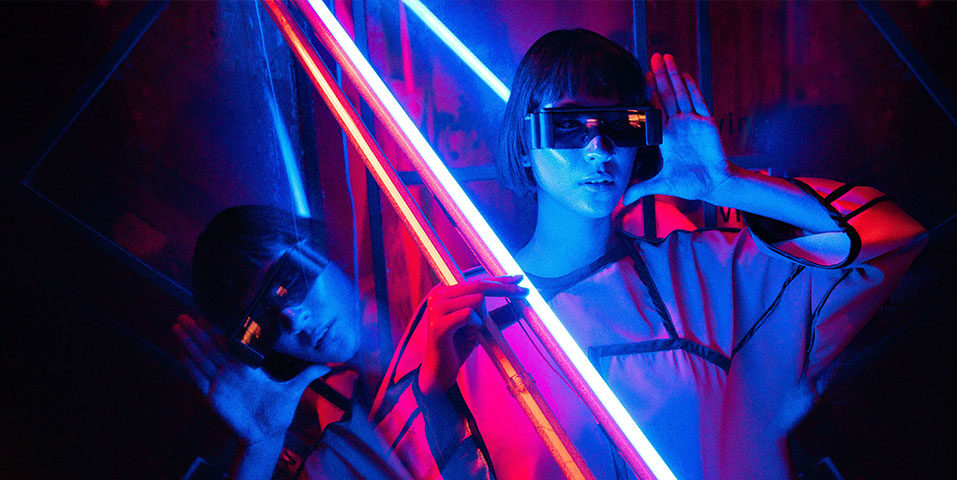As technology continues to evolve at a rapid pace, the screen and broadcast industry is also experiencing significant changes. The emergence of the metaverse — along with technologies like Web3 and Blockchain — is one of the most significant and transcendent developments of recent decades, and these rapidly advancing technologies have the potential to transform the screen and broadcast industry, offering practitioners exciting opportunities to create, distribute, and monetise content in new and innovative ways.
So, what exactly are the metaverse, web3, and blockchain? The metaverse is a virtual world that is created by the convergence of the physical and digital realms. It’s a shared space where users can interact with each other and digital objects in a virtual environment. Web3 is the next generation of the internet, which aims to empower users with more control over their data and enable peer-to-peer transactions without the need for intermediaries. And, Blockchain is a decentralised and transparent digital ledger that securely records transactions and interactions in a tamper-proof manner.
These technologies are highly relevant to screen and broadcast industry practitioners – here are some of the key ways they are shaping the industry.
Content Creation
The metaverse provides a unique and immersive platform for content creation. Screen and broadcast industry practitioners can create virtual experiences, interactive narratives, and 3D content that can be accessed and experienced by users in the metaverse. This opens up new creative possibilities and allows for the development of cutting-edge content that goes beyond traditional broadcasting. With web3 and blockchain, content creators can have more ownership and control over their creations, as these technologies enable decentralised and transparent content distribution and monetisation.
Premiering at the 2022 Sundance Film Festival, We Met in Virtual Reality is the first documentary filmed on a social virtual platform VRChat. Focusing on a couple who meet and begin an intimate relationship in virtual reality, this story highlights the possibilities of content creation in the metaverse. Animated series Metropius also incorporates a wide range of multimedia in its storytelling, including TV, a limited edition, hard copy comic book and non-fungible tokens (NFTs) that offer perks and access to the Metropius metaverse.
Content Distribution
The metaverse and web3 offer new ways of distributing content that isn’t bound by traditional broadcast channels, allowing content to be distributed directly to users in the metaverse and eliminating the need for intermediaries. Web3 enables peer-to-peer content sharing without the need for centralised platforms, giving content creators more autonomy and flexibility in reaching their audiences. Meanwhile, Blockchain-based content distribution also provides enhanced security and transparency, ensuring that content is protected from piracy and unauthorised use.
Producer and actor Sir Anthony Hopkins was one of the first to recognise the benefits of this technology, integrating NFTs into the release of his 2021 film Zero Contact. Released through direct-to-consumer distributor Vuele, the first 11 digital copies of the film were auctioned as NFTs, offering exclusivity and additional content to those first viewers. These 11 NFT holders were then able to watch, sell, buy and trade their exclusive content on the Vuele platform. Similarly, Mila Kunis and Ashton Kutcher’s animated series Stoner Cats was released exclusively via non-fungible tokens (NFTs), with the stars saying the technology provides storytellers with “an outlet where they can be valued and supported,” bringing ownership back to the creators.
Monetisation
The metaverse, web3, and blockchain offer innovative monetisation models for screen and broadcast industry practitioners. In the metaverse, content creators can monetise their virtual experiences through virtual goods, virtual real estate, and virtual events. Users can purchase digital assets using cryptocurrency, and content creators can earn revenue from these transactions. Web3 enables content creators to monetise their content directly through microtransactions and subscriptions without the need for intermediaries, resulting in fairer compensation for their work. Blockchain-based smart contracts also provide opportunities for revenue sharing and royalties, ensuring that content creators are fairly compensated for their contributions.
Fan Engagement
The metaverse, web3, and blockchain facilitate deeper engagement with fans and audiences. In the metaverse, fans can interact with virtual experiences, attend virtual events, and connect with content creators in a more immersive and interactive manner. Web3 allows for direct engagement between content creators and fans through decentralised social media platforms, NFTs (non-fungible tokens) for digital collectibles, and community tokens for fan participation. An example of this is the James Bond franchise, which embraced digital merchandise for No Time to Die. Blockchain also enables transparent and traceable fan interactions, creating a closer relationship between content creators and their fans.
Copyright Protection
Copyright infringement has been a persistent issue in the screen and broadcast industry. The metaverse, web3, and blockchain offer solutions for copyright protection. In the metaverse, content creators can use blockchain to verify and protect their virtual assets, ensuring that their creations are not copied or used without permission. Web3 and blockchain also enable digital rights management, allowing content creators to control the distribution and usage of their content in a decentralised and transparent manner.
These emerging technologies have the potential to transform the industry, empowering content creators with more control, ownership, and revenue from their creations. As the metaverse, web3, and blockchain continue to evolve, screen and broadcast industry practitioners need to stay informed and explore how these technologies can be harnessed to stay ahead in the rapidly changing landscape of content creation and distribution. Embracing these technologies can open up new possibilities, enhance fan experiences, and create a more equitable and transparent ecosystem for content creators in the screen and broadcast industry. It’s an exciting time to be part of this industry, and the metaverse, web3, and blockchain are key tools that can shape its future in unprecedented ways.
Keen to learn more? Check out our short course Business Models in the Metaverse.
